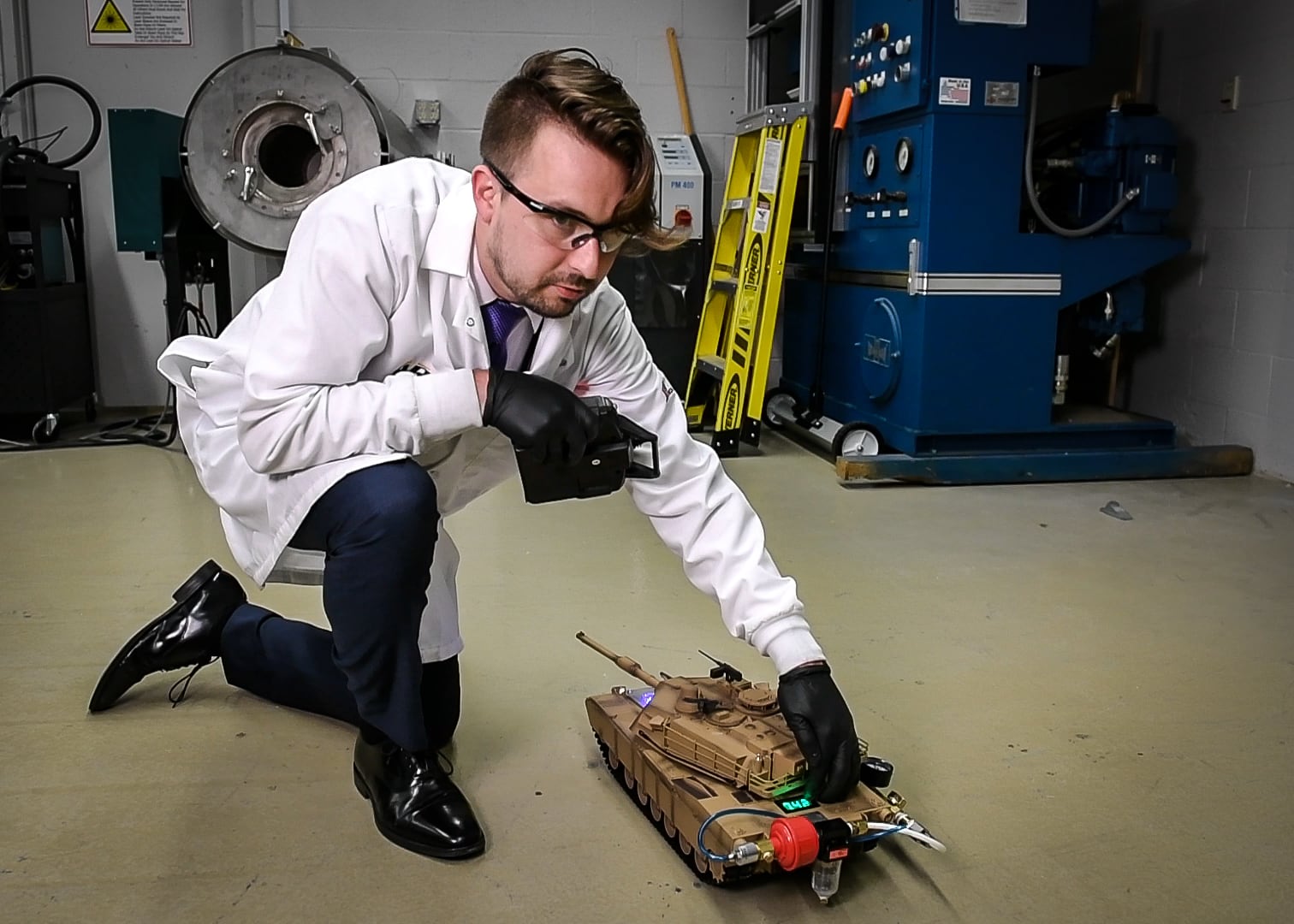Researchers are hoping the discovery of a new energy source will shed troops of heavy batteries and allow them to complete their missions without having to resupply.
Engineers and scientists at the Army Research Laboratory found a way for water to react with an aluminum alloy powder that produces hydrogen without any other catalysts in under three minutes.
While the reaction and production of hydrogen isn’t new, the aluminum nanomaterial the researchers designed causes water to split apart — into two hydrogen molecules and one oxygen molecule — when it comes in contact with the aluminum material.
“We have discovered an aluminum alloy powder, which when added to water, produces hydrogen very rapidly,” Dr. Anit Giri, a physicist at the Aberdeen Proving Ground lab in Maryland, told Army Times.
Normally, when aluminum is exposed to air, it forms an oxide layer that impedes the reaction that creates hydrogen, Giri said. The trick is to break that layer to keep the reaction going by adding an alkaline material such as sodium hydroxide.
“Our material does not need any of those added catalysts,” Giri said. “Whenever we want to produce hydrogen, we can just add water to this powder.”
The hydrogen can be used in a fuel cell to potentially power equipment and vehicles and recharge devices, said Scott Grendahl, a materials engineer and team leader.
“If we could generate power on each individual soldier … we would be far better off as a fighting force,” he said.

If troops in the field don’t have to worry about carrying batteries around or waiting for a resupply, they can extend their away times, said Dr. Kris Darling, a nanomaterials scientist.
There’s also the potential for the reaction to occur even without pure water, he said. For example, a soldier could use a sport drink or rainwater — and possibly even urine or sweat — to add to the powder and create hydrogen.
The same can be done to make the aluminum alloy powder. Instead of needing pure aluminum, troops could scavenge a damaged vehicle for the material.
“Essentially, you wouldn’t have to bring anything in except for the equipment to make the powder,” Darling said.
The team is still researching its applications, but they recently powered a small radio-controlled tank. Mixing the powder with a small amount of water caused a bubbling reaction, which produced enough hydrogen to power the tank around the lab.
Hydrogen is part of the big push for alternative energy, Grendahl said, and this new reaction would make it easier to transport and use.
The military currently uses Jet Propellant 8, or JP-8, which can fuel aircraft, tanks and other devices. It’s expensive and must be taken into the field in bladders. The aluminum alloy powder, however, can safely be airdropped in sealed pouches.
The discovery could also make troops safer.
Fuel convoys have been a major target in the wars in Iraq and Afghanistan, Grendahl said, but “if we’re carting around aluminum, it’s not explosive. It’s not a target like JP-8 would be.”
The fears that have normally surrounded hydrogen — think Hindenburg — don’t apply to the team’s discovery because the hydrogen wouldn’t hang around long enough to cause an explosion, Grendahl said.
“We would just be transporting the powder around along with the fuel cell,” he said. “There would be no need to have compressed or liquefied hydrogen all over the place, and if it’s used as soon as it’s created, then there’s never enough of it to become explosive.”
Charlsy is a Reporter and Engagement Manager for Military Times. Email her at cpanzino@militarytimes.com.





